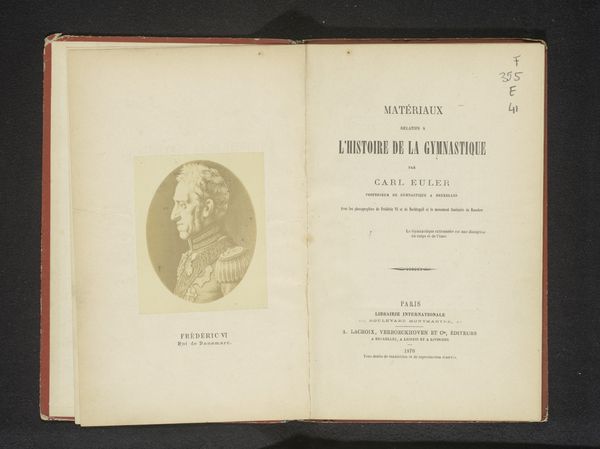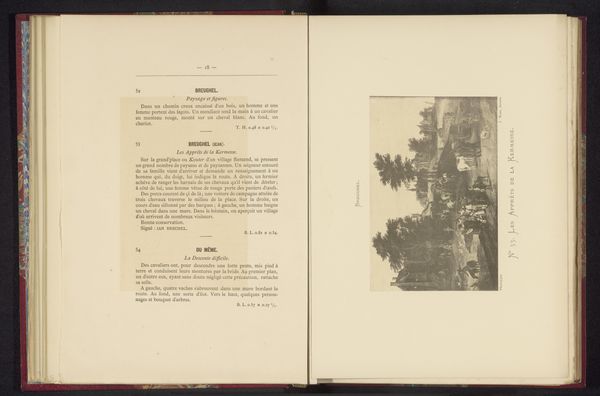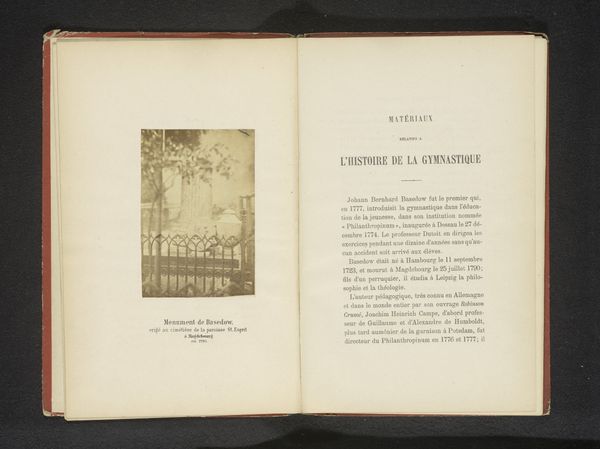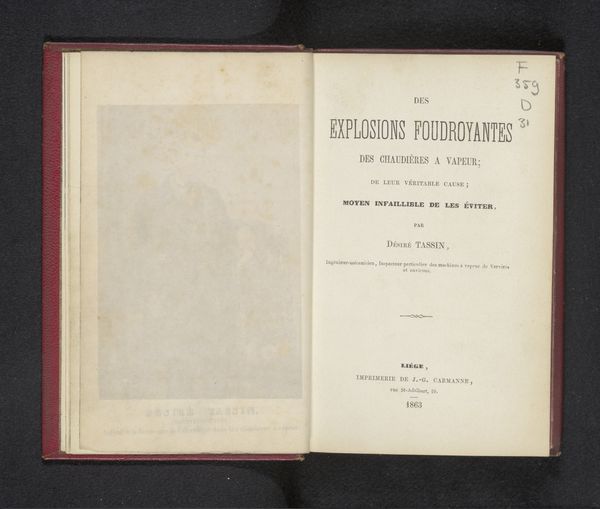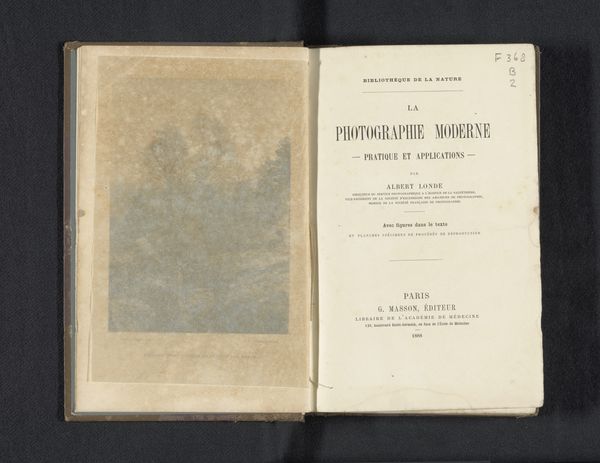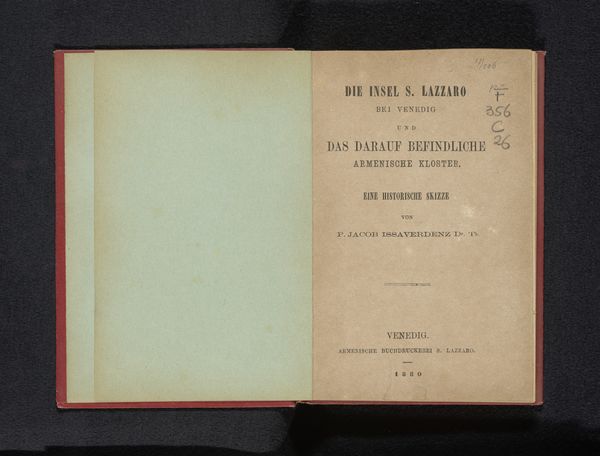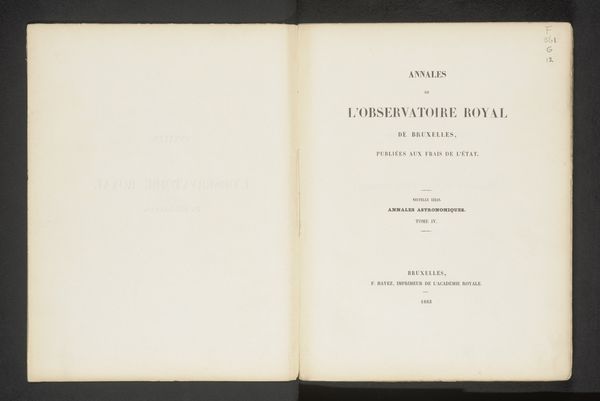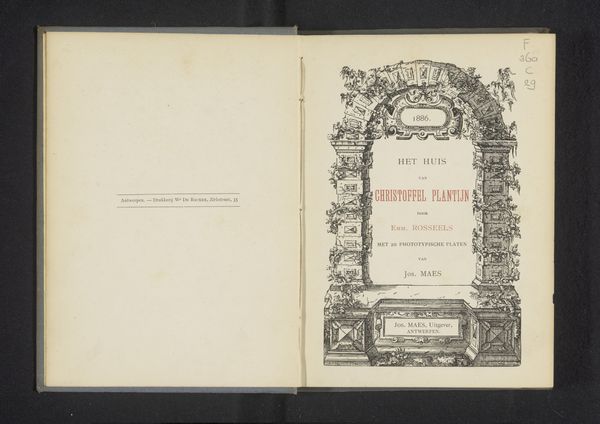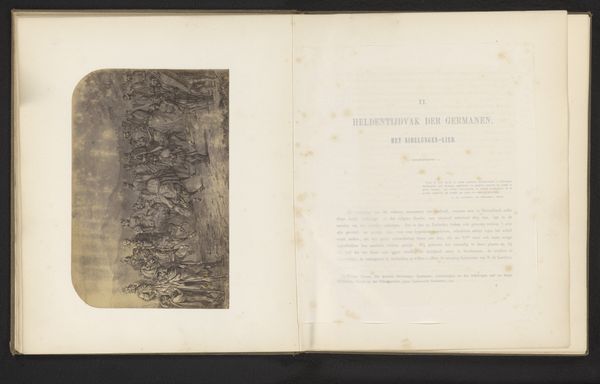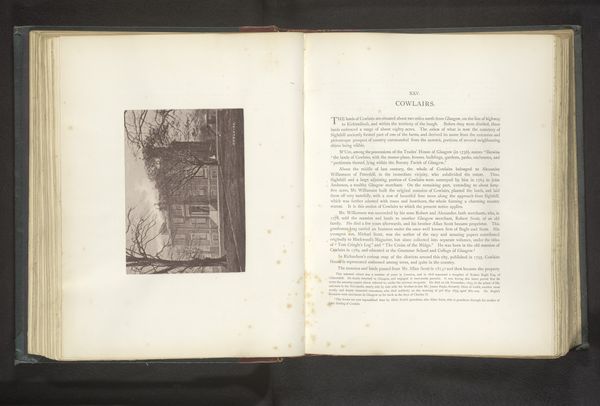
print, photography
#
medieval
# print
#
photography
#
history-painting
#
academic-art
Dimensions: height 201 mm, width 137 mm, thickness 21 mm
Copyright: Rijks Museum: Open Domain
Editor: This is a fascinating artifact – the book “Histoire de l'abbaye de Gembloux, de l'ordre de Saint-Benoît” from 1882 by M. l'Abbé Toussaint, mixing photography and print. It’s open, displaying both the title page and a hazy photographic plate. The slightly deteriorated look gives it an air of age and mystery. How do you read the historical significance of a book like this, especially in how it depicts the Abbey? Curator: It’s intriguing how this object presents the Abbey. Photography was becoming increasingly accessible in the late 19th century, shifting perceptions of history and memory. By embedding photography into a historical text, this book participates in creating a specific public image for the Abbaye de Gembloux. Consider: was this meant for scholarly consumption, local pride, or something else? What impact did choosing photography—over, say, an engraving—have on readers at the time? Editor: I hadn't thought about the choice of media so much. Why would photography be chosen specifically for a historical text? Curator: Photography offered a sense of immediacy, of witnessing the place. However, that supposed ‘truth’ is constructed. Think about the photographer's choices—framing, lighting, even the paper used—all shaping how viewers understand the Abbaye’s history and significance. The visual is being employed to construct the historical narrative in ways that are very calculated. It’s not a neutral recording. Editor: So, this isn't just about the abbey itself, but about how it was being presented and understood at that time? Curator: Precisely. The book serves as a piece of institutional history, framing the Abbey’s legacy within the cultural and political landscape of 19th-century Belgium. By understanding its production and intended audience, we can better unpack the intended messages of its commissioners. Editor: I see! It’s amazing how a book can be such a loaded historical document, telling stories beyond the text itself.
Comments
No comments
Be the first to comment and join the conversation on the ultimate creative platform.
